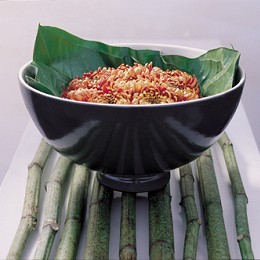
info about the flowers & plants association |
| the latest events in the flower world |
view the latest flower fashion trends |
green & gorgeous – boost your wellbeing with houseplants |
advice on where to buy & recommended retailers |
data & details about the flower industry |
how
to join and what benefits we can offer you as a member |
for
journalists & the media – what we can do for you |
index
of pages on this site to aid your navigation |
|
Chrysanthemum
Name: Comes from the
Greek "krus anthemon" meaning gold flower. However nowadays they come
in all colours. Origin: China and Japan. The Chinese who considered them the highest of flowers, named their royal throne after the flower. Colour: All colours including bronze, lime green and brick red, except blue (which are artificially dyed for special events). Availability: All year round Varieties: "Mums" come in a range of shapes and sizes, including spiders, spoons, buttons and blooms. Blooms are normal chrysanthemum varieties which have undergone intensive and specialised growing care. Instead of letting the plant produce side shoots which would bear flowers, all these shoots are removed, leaving only one central stem. This is then similarly treated so that only one flower bud remains. All the energy of the plant is directed into this bud which then grows to a huge size. Blooms come in many different forms, just like dahlias. Some are tight petalled, with all the petals curling upwards. Some have petals which curve and twist like a huge feather hat. Family: Relatives include chamomile, tansy, marguerite and matricaria. Trivia: Facts: The chrysanthemum is depicted on Japan's imperial weapon and flag. Japan also has a national festival devoted to the flower (9th Sept) Mythology: Some countries (such as Malta) think it is unlucky to have the flower indoors. It is associated with funerals and All Saints Day. In Germany, people put white chrysanthemums in their homes at Christmas, to welcome baby Jesus. Medicinal: Feng Shui adherents believe the chrysanthemum brings laughter and happiness to your home. History: The chrysanthemum flower has been known since before 5000 BC in a small yellow form. Ancient China and Japan both have tales explaining how the chyrsanthemum originated. >
Click here to find out more of the mythological origins of the chrysanthemum
| |

|